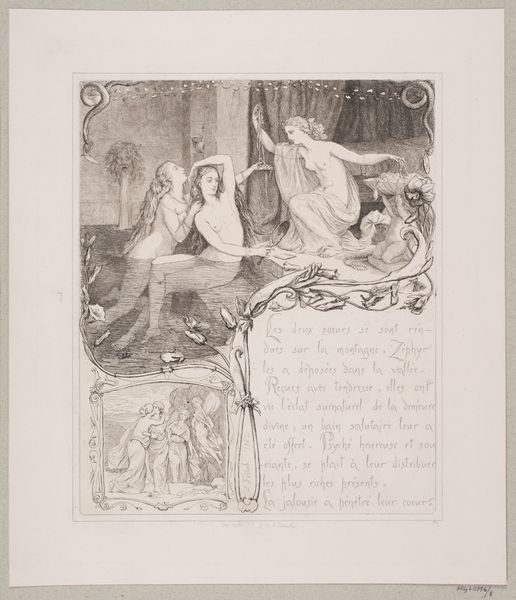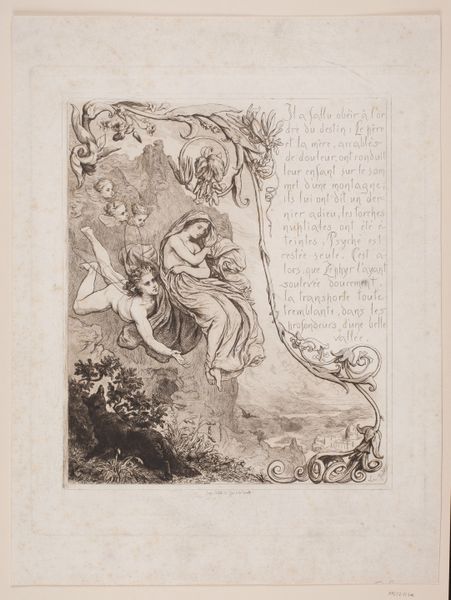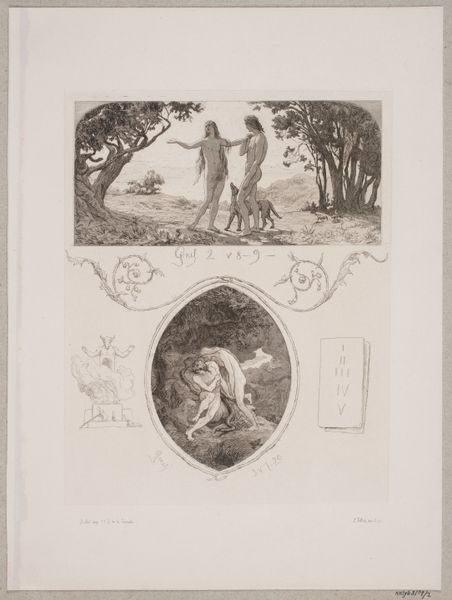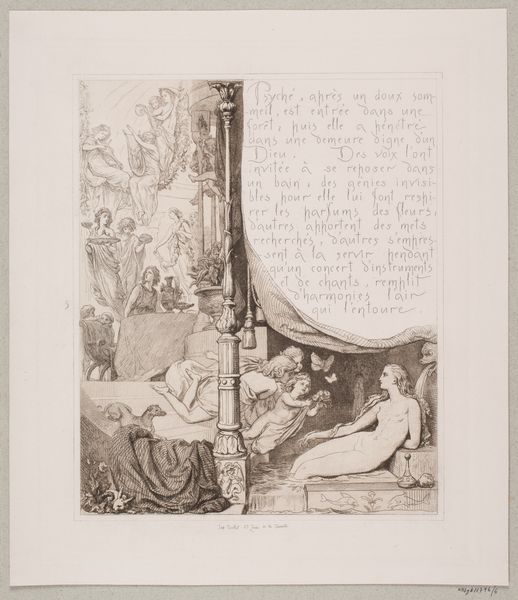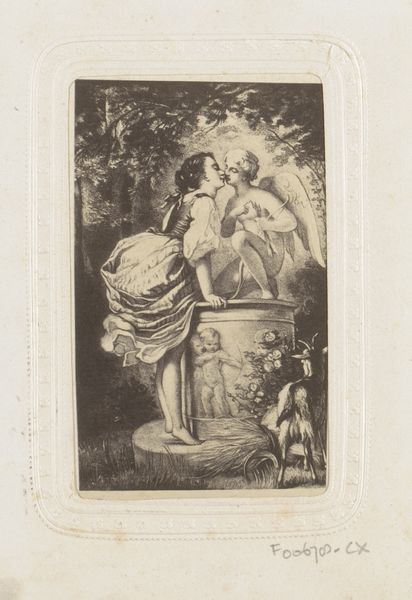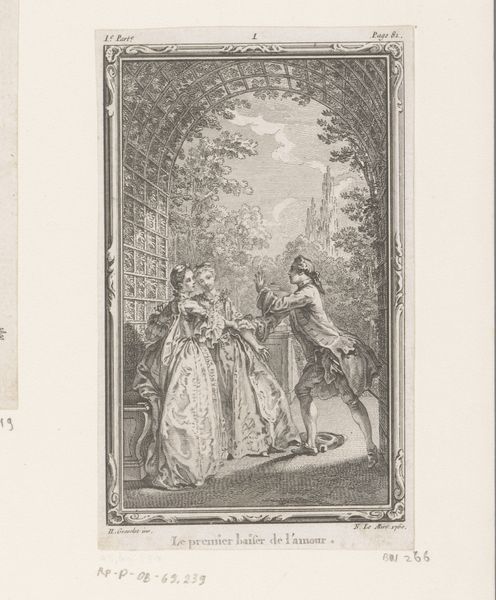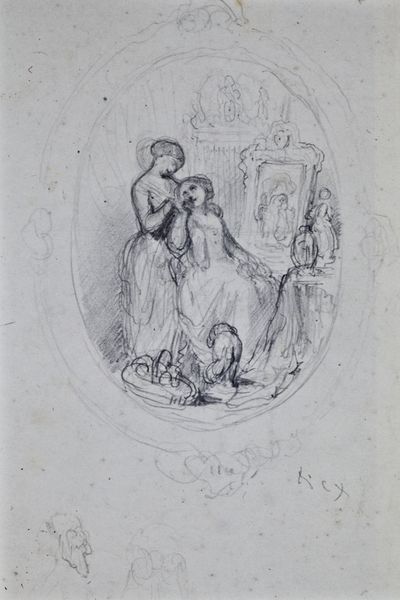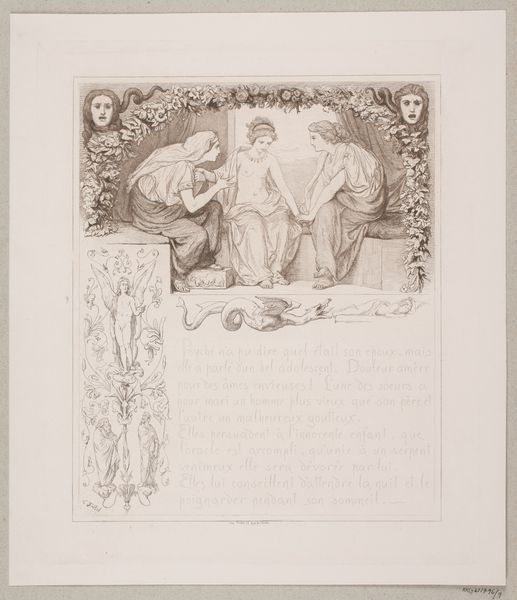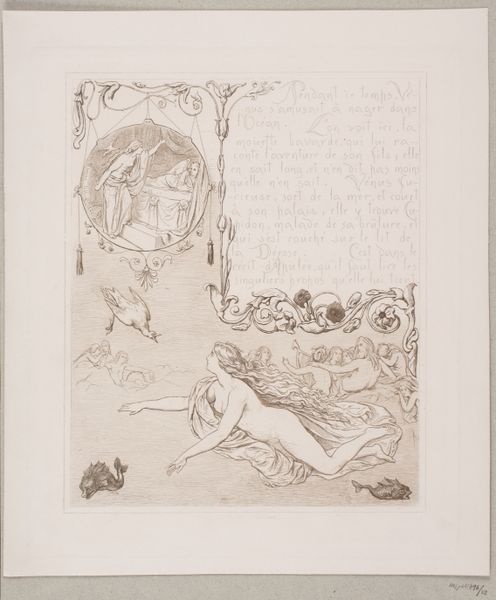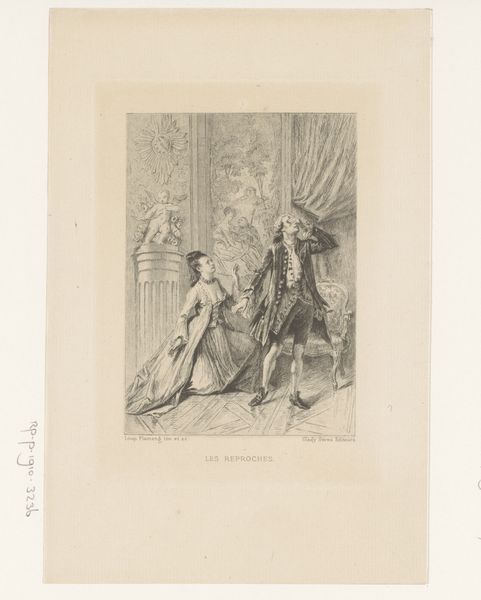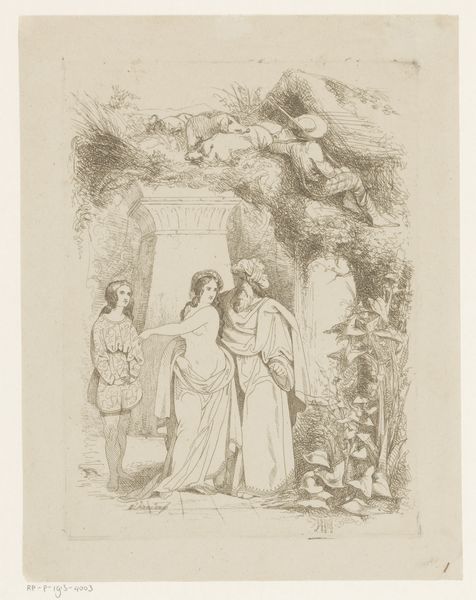
drawing, print, etching, ink, engraving
#
portrait
#
drawing
#
narrative-art
# print
#
etching
#
figuration
#
ink
#
pencil drawing
#
history-painting
#
engraving
Dimensions: 377 mm (height) x 304 mm (width) (bladmaal)
Curator: This drawing by Lorenz Frølich is entitled Illustration nr. 7 til "L`Amour et Psyché", created around 1862. It is made with etching, engraving and ink. It illustrates an extract from the well known greek novel, telling the story of Eros and Psyche. Editor: What strikes me immediately is the dreamy atmosphere. Despite the linear precision afforded by the etching technique, it has such a sensual, almost languid feel. Curator: It certainly encapsulates a specific artistic climate. The image coincides with a renewed interest in classical mythology across Europe in the mid-19th century, a phenomenon intertwined with growing nationalism. Editor: Absolutely. And notice how Frølich uses classical iconography – the semi-nude figures, the stylized drapery, the vaguely Grecian architecture – but he filters it through a Northern European sensibility. The detail and meticulousness in the depiction of the figures almost recall Pre-Raphaelite art. I mean, look at how the artist depicted these water fairies! Curator: I think that blend is crucial to understanding its cultural impact. These images became powerful tools for shaping cultural identity. By visually linking themselves to a revered past, nations could legitimize their contemporary political ambitions. Frølich was after all commissioned by several european royal families. Editor: Right. The serpent intertwined through the entire etching, is a clear reminder that this story isn't just about physical beauty or earthly power, but about the challenges of growth. We could interpret the text as another layer of symbolic information: the text at the lower section reminds the jealousy between the characters... Curator: Exactly. Art like this functions as both an aesthetic object and a piece of political rhetoric. It's a beautiful demonstration of how the classical past was reimagined and put to use in the service of modern agendas. Editor: It’s interesting to see how mythology allows artists to address complex socio-political ideas without resorting to didactic imagery. Thanks to the story, there is a distance, allowing for nuance, even ambivalence, of ideas. Curator: I agree completely. Exploring that interplay between aesthetic appeal and historical messaging truly enriches our understanding of the period.
Comments
No comments
Be the first to comment and join the conversation on the ultimate creative platform.
